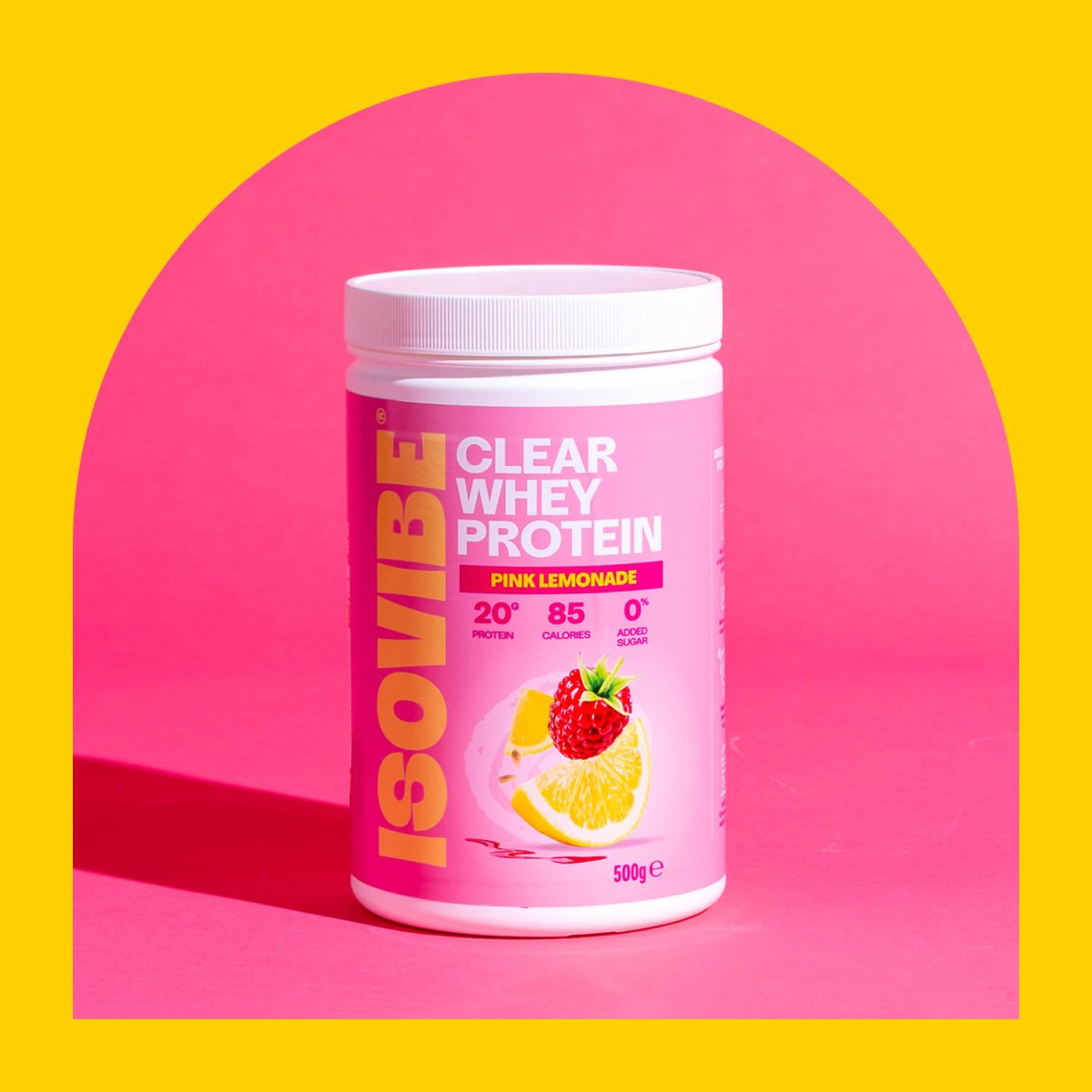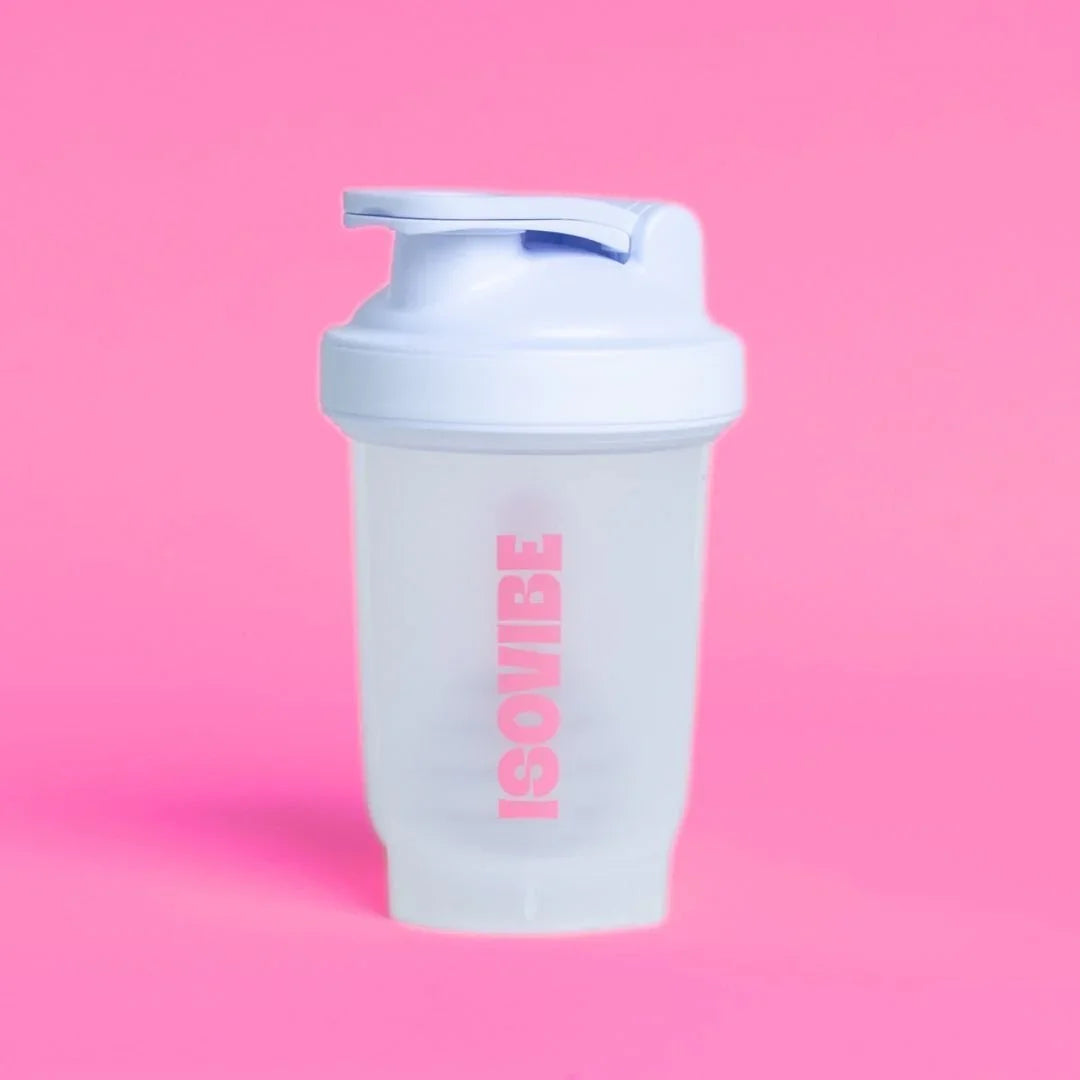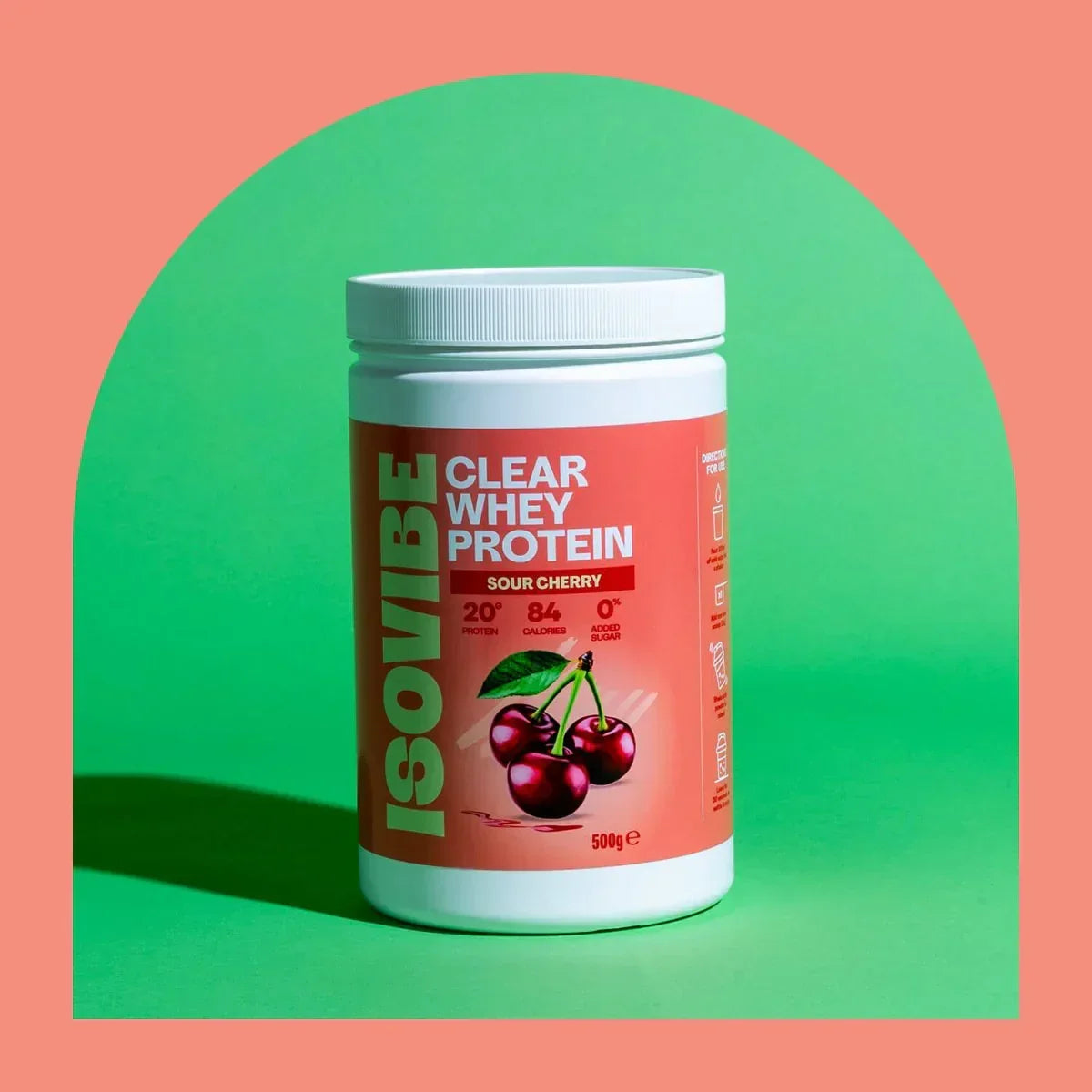How Protein Supports Muscle Recovery and Growth
Every workout you complete is just the beginning… The real magic happens after. That’s when your body goes into beast mode behind the scenes: rebuilding tissue, levelling up strength, boosting endurance, and growing those muscles. Recovery is where the gains live.
Protein is your ride-or-die in this process, but let’s be honest, not everyone knows how to use it right to actually crush their fitness goals.
This guide breaks down what’s really going on in your muscles when you train, and how to use protein like a pro to recover faster and get results that actually hit differently.
What Happens Inside Your Muscles After Training
Every workout kicks off muscle protein synthesis (MPS), basically your body’s way of saying, “Let’s level up these muscles to handle that chaos you just threw at them.”¹
Your muscle cells go into full-on boss mode, sending out instructions to build new proteins like myosin and actin, the real MVPs that make your muscles contract and bring the power. But here’s the catch: they need two things to get to work: energy (ATP, aka your body’s go-to power source) and raw materials (amino acids chillin’ in your bloodstream).
The thing is, training alone actually puts your muscles in the red. Yep, without proper fuel, you’re stuck in a protein deficit for hours.² But when you exercise with the right kind of protein? Boom - you trigger a major upgrade effect.
Here’s the vibe: exercise flips the “muscle growth switch” (scientifically known as mTOR… sounds like a Marvel villain, but it’s legit). Protein rushes in with the building blocks and sends bonus growth signals.³ Exercise starts the engine, protein brings the nitro boost.
Your muscles stay grinding in recovery mode for 24 - 48 hours after your workout, with the real peak happening 1–3 hours post-sweat session.¹ During this time, they’re repairing damage, building new fibres, and coming back stronger.
Most people only focus on the quick post-workout shake. But the real ones fuel the full 48-hour recovery window. That's the next-level strategy.
Match Your Protein to Your Training
Strength Training
Heavy lifting puts your muscles in beast mode, and they need some serious protein fuel. Studies show strength athletes crush it with 1.4-2.0g protein per kg of body weight daily.⁴
Aim for 25-30g of high-quality protein within 2 hours post-workout, making sure you get at least 2.5g of leucine, that’s the “start button” amino acid that fires up muscle growth (aka the mTOR pathway).⁵ Then keep hitting protein-packed meals every 3-4 hours to keep the gains coming.
Endurance Training
You might not be bulking up like a bodybuilder, but your muscles are still busy repairing and upgrading energy systems.
Endurance athletes usually need 1.2-1.4g protein per kg daily.⁶ After long sessions, prioritize 20-25g protein with carbs to fix muscle damage and top up glycogen which is basically your muscles’ energy tanks.
HIIT
High-intensity intervals hit muscles hard and throw down oxidative stress (fancy talk for exercise damage). This combo calls for 1.6-2.0g protein per kg daily.
Within 30 minutes post-HIIT, grab 20-25g fast-absorbing protein like Isovibe Clear Whey Protein. Then within 2 hours, go for a full meal with 25-30g protein plus carbs to keep the recovery vibes strong.
Protein Quality Matters
Complete vs Incomplete
Your muscles need all nine essential amino acids - these are the protein building blocks your body can’t make on its own. Miss one? The whole muscle-building process hits the brakes.⁷
Animal proteins usually take the crown for being complete: whey isolate (super fast absorption and packed with leucine), lean meats (full amino acid squad), fish (bonus points for anti-inflammatory omega-3s), and eggs (perfect amino acid balance).
Plant proteins can totally work if you play it smart: soy is naturally complete, mixing rice and peas creates a full profile, and beans + grains cover all your bases.⁸
Leucine is the real MVP. It’s like the ignition key for muscle building. When leucine hits about 2.5-3g in your bloodstream, it fires up the mTOR pathway, telling your muscles, “Let’s build!”⁹ That’s why leucine often matters more than just total protein. For example, 25g of whey (high in leucine) can outdo 25g of many plant proteins with less leucine.
Absorption Speed
-
Fast proteins (whey, clear whey): hit peak in 30-60 mins, perfect for right after your workout
Medium proteins (eggs, fish): peak in 1-2 hours, great for meals -
Slow proteins (casein, cottage cheese): take 3-6 hours, ideal before bed
Pro tip: match your protein type to your recovery goals instead of just sticking to one style all day.
Timing Truth
The Anabolic Window Reality
Remember that whole “anabolic window” hype? You had 30-60 minutes post-workout or you lose all your gains… Yeah, turns out it’s way more chill than that.¹⁰
Muscle protein synthesis stays lit for 24-48 hours after you train. The real practical window? Like 5-6 hours around your workout. What really wins is spreading your protein throughout the day and timing isn’t everything.¹¹
Timing gets really important when you’re training fasted (grab protein ASAP), doing multiple workouts a day (protein between sessions is key), eating in tight windows, or going super hard volume-wise.
Pre-Workout Strategy
Eating protein before your workout actually boosts your post-workout gains. Aim for 15-20g of easily digestible protein 1-2 hours before you hit the gym. Clear whey or Greek yoghurt are clutch providing no tummy drama.
Overnight Recovery
Your muscles don’t clock out when you sleep. Growth hormone during deep sleep helps your muscles build up.
Have 20-30g of slow-release protein 30-60 minutes before bed - casein or cottage cheese are perfect and won’t mess with your sleep.
Smart Supplementation
Ladies tend to have 70-80% less creatine stored than guys.¹² Creatine helps muscles make energy fast for explosive moves like lifting or sprinting. Taking 3-5g daily helps you train harder and consistency beats timing here.¹³
Many women also run low on vitamin D, which can mess with muscle strength and recovery.¹⁴ Try 1000-2000 IU daily with some fats.
Omega-3s boost muscle building and chill inflammation. Aim for 2-3g combined EPA/DHA daily (the good stuff in fish oil).
Why Clear Whey Works
Normal protein shakes can feel heavy and upset your stomach, especially around intense workouts. Clear whey protein is light, fast-absorbing, and still packs all the amino acids you need.
It’s quick, easy on digestion, has a perfect leucine count, tastes light, and skips lactose or fats that slow things down.
Training Scenarios
High Volume Phases
Up your protein to 2.0-2.5g/kg daily. Focus on fast-absorbing protein right after sessions. For workouts over 90 minutes, try sipping on amino acids during training (like BCAAs or EAAs) to stop muscle breakdown.
Cutting Phases
When you’re in fat-loss mode (eating fewer calories but keeping muscle), bump protein to 2.3-3.1g/kg daily.¹⁵ Stick to complete, high-quality proteins and spread them across 4-5 meals. Time your biggest protein hits around training to keep those muscles safe.
Post-Injury Return
Ease protein up as training ramps back up. Focus on anti-inflammatory options like fish and full proteins for muscle repair.
What This Means for You
Your muscles respond to smart nutrition that can seriously boost or block progress. Knowing how protein fuels recovery means you can train harder and get the results you want.
Focus on complete proteins with 2.5-3g leucine per serving. Timing windows are real but way more chill than you think. Daily protein distribution beats perfect timing every time.
Tailor your protein plan to your training, not generic rules. Muscle growth is a 24-48 hour party post-workout and you can fuel it all the way.
Protein works best with good sleep, stress control, and overall nutrition. All that stuff impacts how your body uses protein to rebuild and grow.
For full deets on protein through different life stages and hormones, check out our Women’s Protein Guide: Cycles, Pregnancy & Menopause Needs.
Your muscles are levelling up every session and now you’ve got the hacks to fuel that glow-up right.
Scientific References:
¹ Phillips, S.M. & Van Loon, L.J. (2011). Dietary protein for athletes: from requirements to optimum adaptation. Journal of Sports Sciences, 29(S1), S29-S38.
² Moore, D.R. et al. (2009). Ingested protein dose response of muscle and albumin protein synthesis after resistance exercise in young men. American Journal of Clinical Nutrition, 89(1), 161-168.
³ Drummond, M.J. & Rasmussen, B.B. (2008). Leucine-enriched nutrients and the regulation of mTOR signalling and human skeletal muscle protein synthesis. Current Opinion in Clinical Nutrition & Metabolic Care, 11(3), 222-226.
⁴ Helms, E.R., Zinn, C., Rowlands, D.S. & Brown, S.R. (2014). A systematic review of dietary protein during caloric restriction in resistance trained lean athletes. International Journal of Sport Nutrition, 24(2), 149-154.
⁵ Witard, O.C. et al. (2014). Myofibrillar muscle protein synthesis rates subsequent to a meal in response to increasing doses of whey protein at rest and after resistance exercise. American Journal of Clinical Nutrition, 99(1), 86-95.
⁶ Witard, O.C. et al. (2014). Myofibrillar muscle protein synthesis rates subsequent to a meal in response to increasing doses of whey protein at rest and after resistance exercise. American Journal of Clinical Nutrition, 99(1), 86-95.
⁷ van Vliet, S., Burd, N.A. & van Loon, L.J. (2015). The skeletal muscle anabolic response to plant- versus animal-based protein consumption. Journal of Nutrition, 145(9), 1981-1991.
⁸ Gorissen, S.H. & Witard, O.C. (2018). Characterising the muscle anabolic potential of dairy, meat and plant-based protein sources in older adults. Proceedings of the Nutrition Society, 77(1), 20-31.
⁹ Witard, O.C. et al. (2014). Myofibrillar muscle protein synthesis rates subsequent to a meal in response to increasing doses of whey protein at rest and after resistance exercise. American Journal of Clinical Nutrition, 99(1), 86-95.
¹⁰ Aragon, A.A. & Schoenfeld, B.J. (2013). Nutrient timing revisited: is there a post-exercise anabolic window? Journal of the International Society of Sports Nutrition, 10, 5.
¹¹ Schoenfeld, B.J., Aragon, A. & Krieger, J.W. (2013). The effect of protein timing on muscle strength and hypertrophy: a meta-analysis. Journal of the International Society of Sports Nutrition, 10, 53.
¹² Kreider, R.B. et al. (2017). International Society of Sports Nutrition position stand: safety and efficacy of creatine supplementation in exercise, sport, and medicine. Journal of the International Society of Sports Nutrition, 14, 18.
¹³ Antonio, J. & Ciccone, V. (2013). The effects of pre versus post workout supplementation of creatine monohydrate on body composition and strength. Journal of the International Society of Sports Nutrition, 10, 36.
¹⁴ Kreider, R.B. et al. (2017). International Society of Sports Nutrition position stand: safety and efficacy of creatine supplementation in exercise, sport, and medicine. Journal of the International Society of Sports Nutrition, 14, 18.
¹⁵ Helms, E.R., Zinn, C., Rowlands, D.S. & Brown, S.R. (2014). A systematic review of dietary protein during caloric restriction in resistance trained lean athletes. International Journal of Sport Nutrition, 24(2), 149-154.




